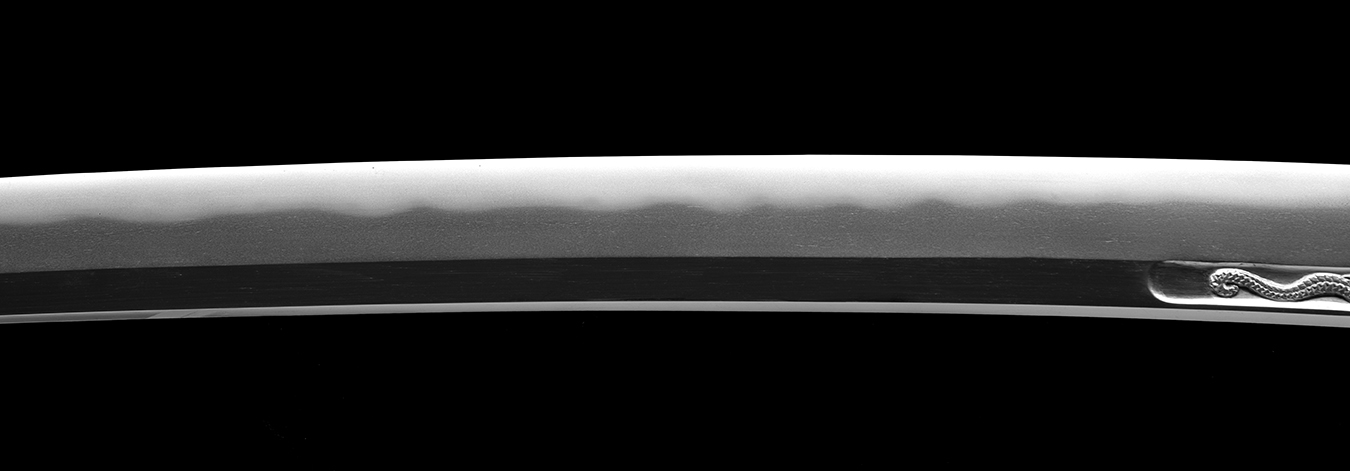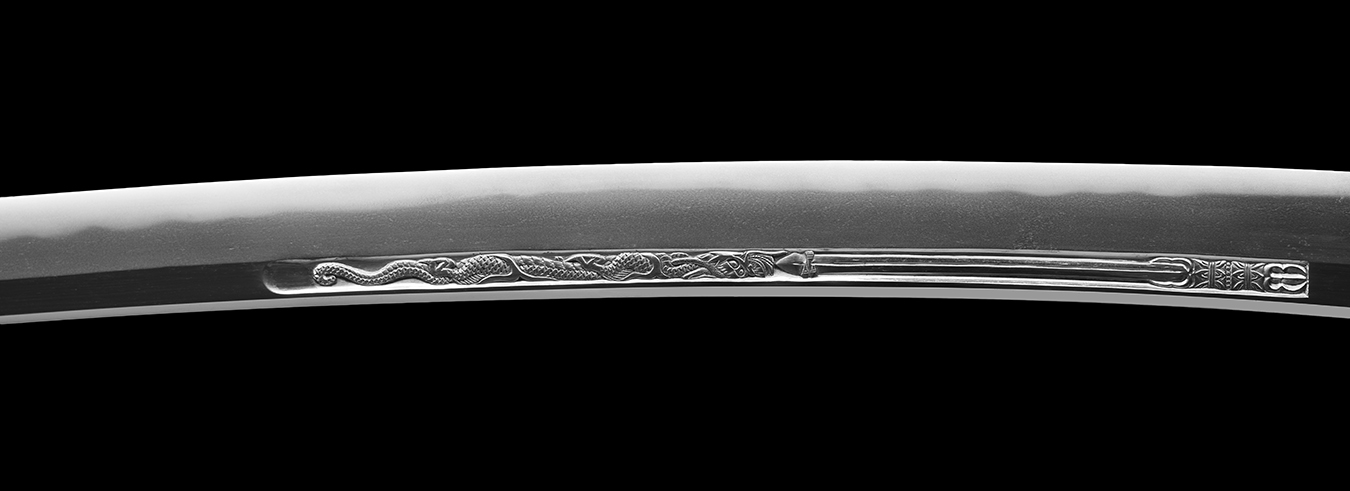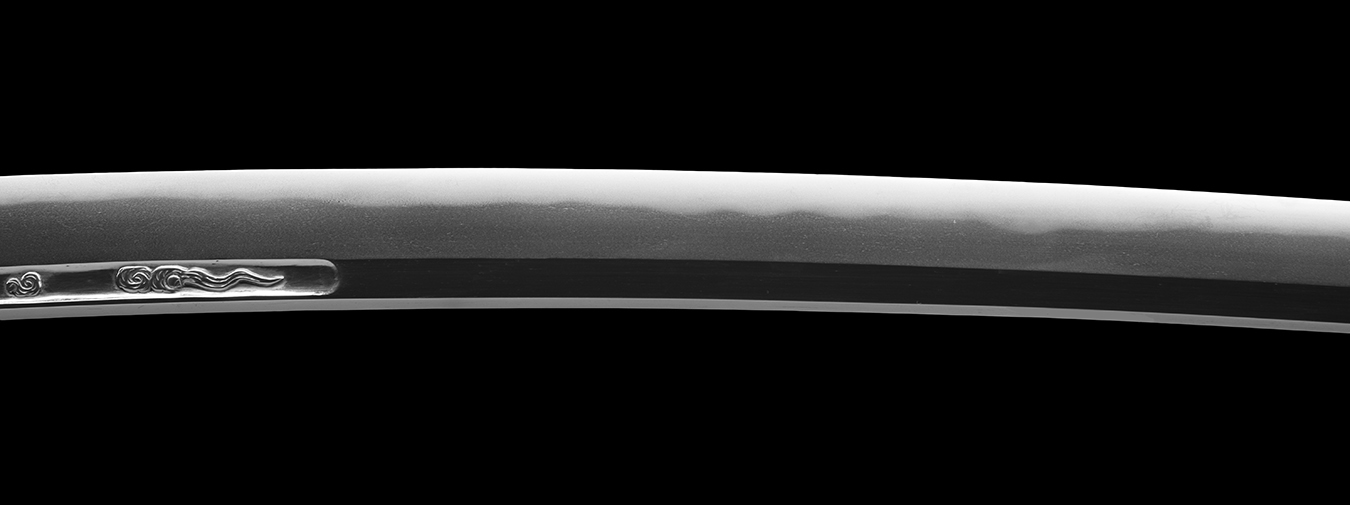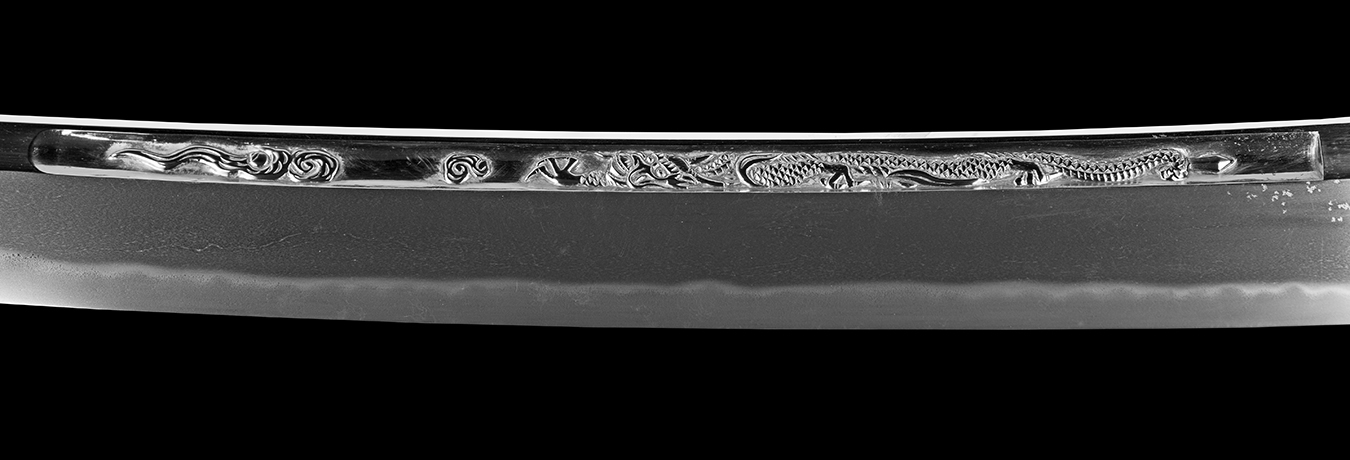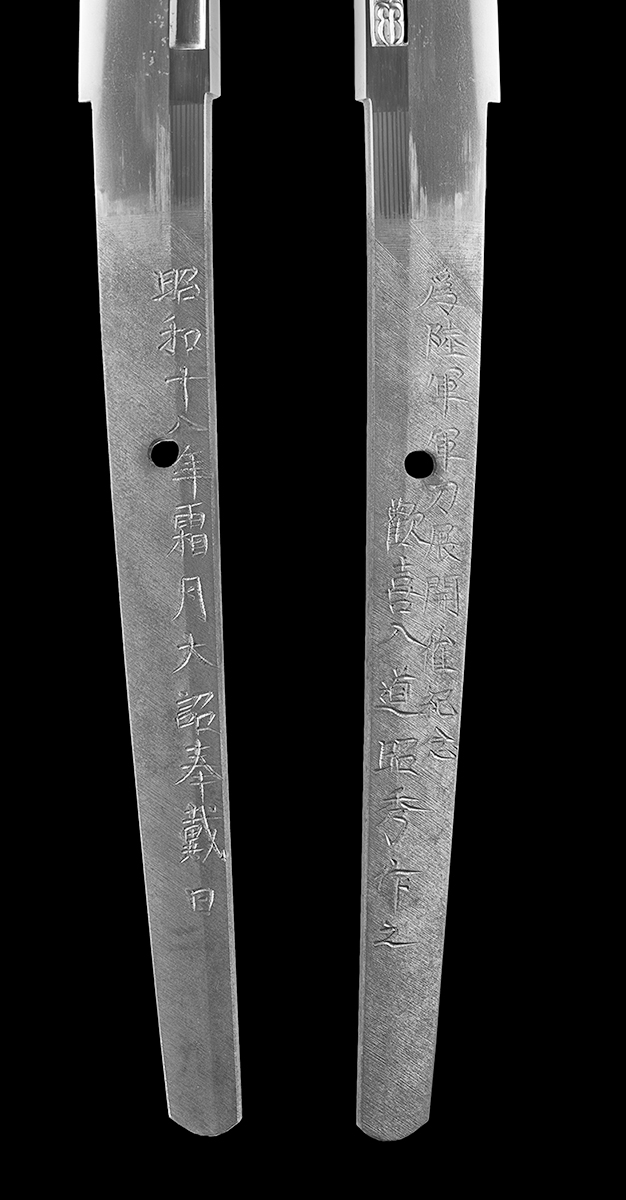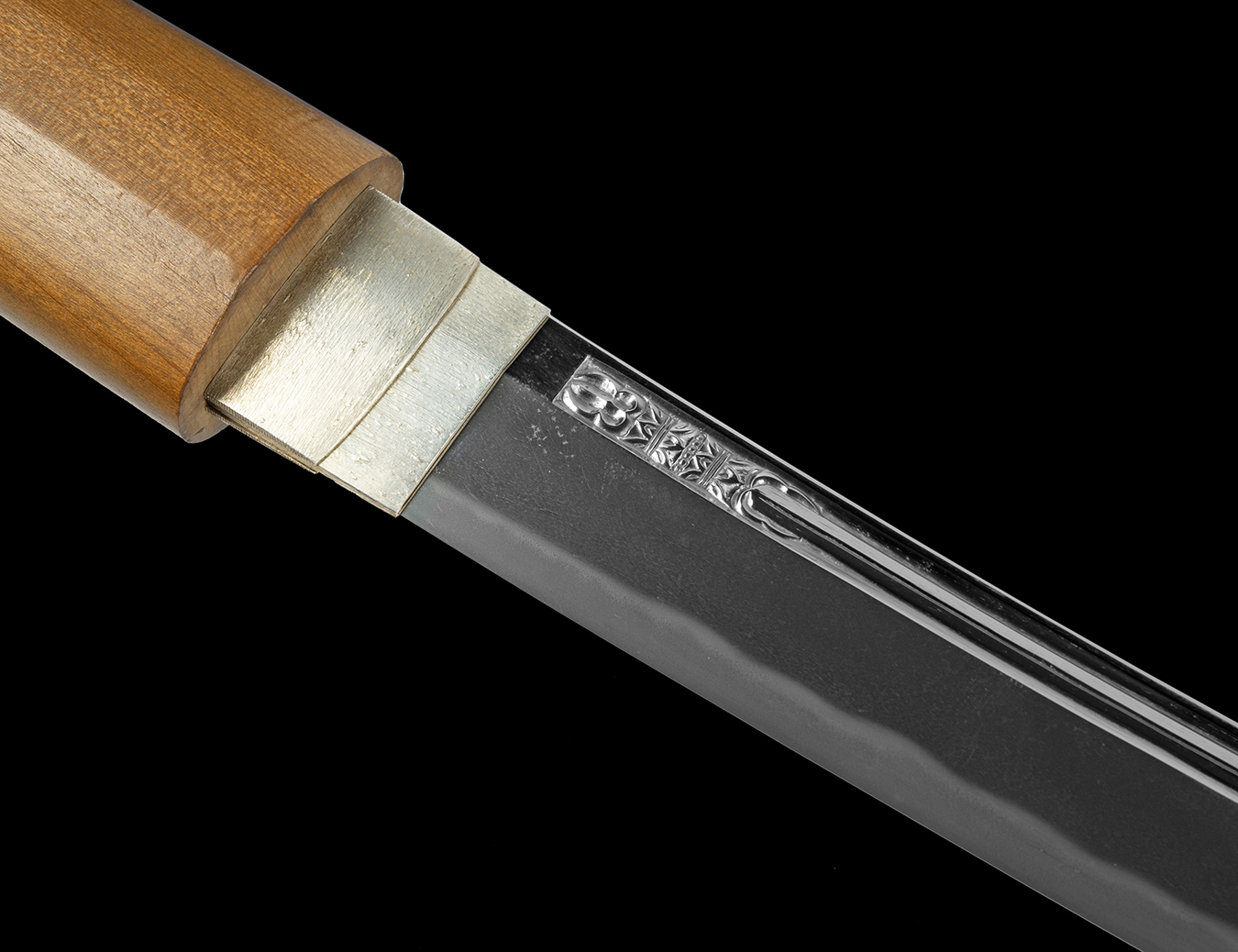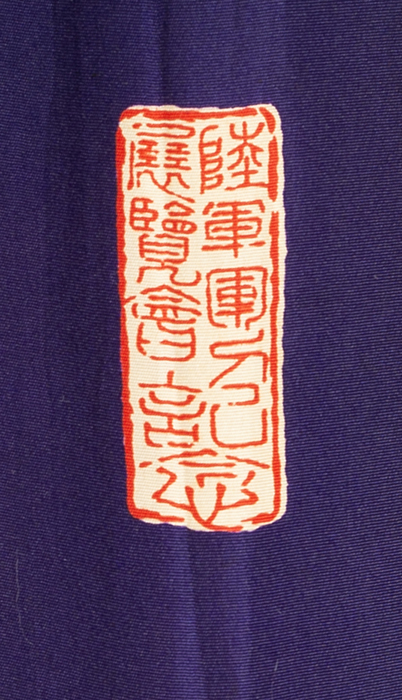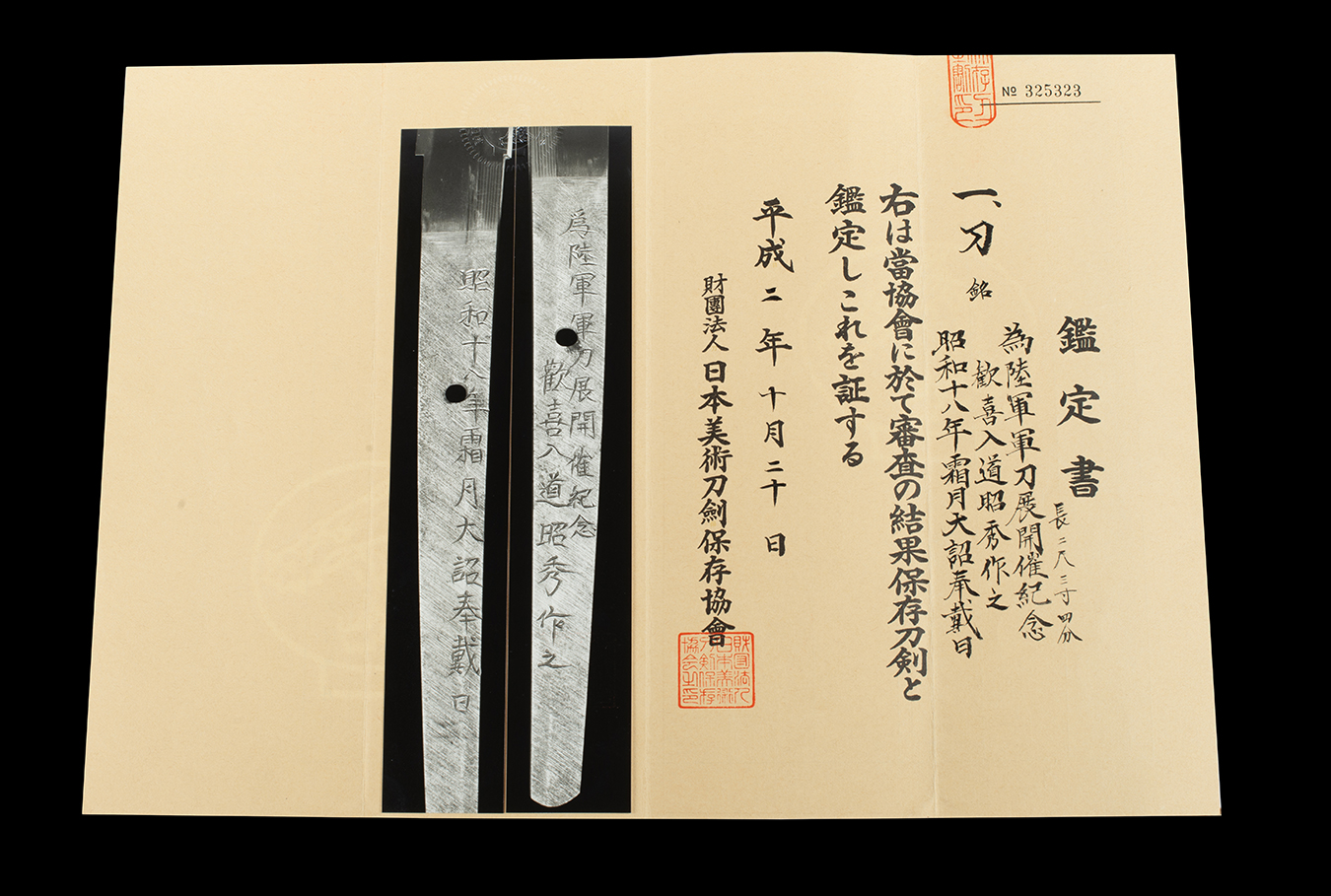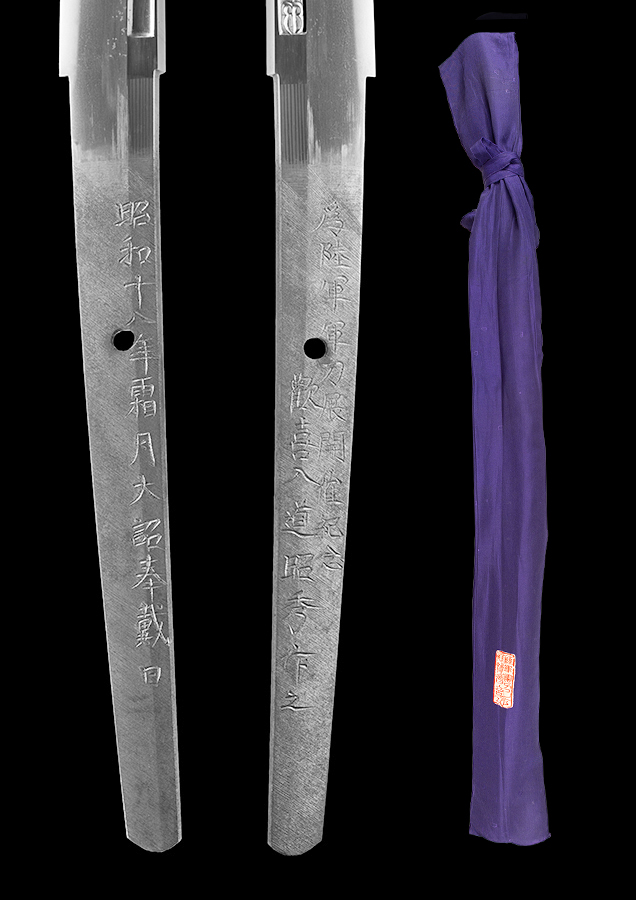|
| |||||||||||||||||||||||||||||||||||||||||||||
Hamon : Nie-deki. Ko-choji gunome based on suguha. The nioi-guchi is bright and even. There are many ashi and yo.
Boshi : Midare komi with a medium return.
Kitae : Ko-itame hada with ji-nie and chikei.
About this sword : Kurihara Akihide is credited with having saved the Japanese sword twice. He had a major role in the revival of the craft in the early 20th century and again in 1952 when he made efforts to revive sword making after it had been outlawed after WWII.
His civilian name was Kurihara Hikosaburo and he was born in 1879. He lived in Sano of Tochigi Prefecture. There he studied under Inagaki Saijiro Masanori. Later he became an apprentice of Horii Taneaki. He was a member of the Lower House of Tochigi Prefecture and successful in politics. On July 5th, 1933 he opened the famous training site Nihonto-Tanren-Denshujo. This was at his home in Tokyo's Akasaka-Hikawashita. Many of the most important swordsmiths of the 20th century were trained there. Kurihara Hikosaburo passed away on May 5th 1954 at the age of 76.
These excerpts are from the following book:
(1971) Tadashi Ohno "Gendai Toko Meikan" pp. 217, 218, (Kogei Shuppan, 1st Ed;)
Translated by Tsuguyasu (Tom) Wada.
Later, Parliament (House) Member Hikosaburo Kurihara established Nihonto Tanren Denshu-sho (Nihonto Forging School; it was later renamed as Nihonto Gakuin) in his own house in Akasaka. He appointed Shigetsugu Kasama as the forging leader to train sword makers. The sword smiths who grew at this school include Akitomo Akimoto, Akifusa Ishii, Kuniie Yoshihara, Akihira Miyairi, Akitsugu Amada and others, and it shows that Mr. Kurihara contributed greatly to sword making in this period.
It was 1924 when Japanese swords were included in the Imperial Art Academy Exhibition. Mr. Hikosaburo Kurihara proposed that swords would be included in the 15th Exhibition of Imperial Art Academy and it was approved. Nearly 80 sword smiths who participated in the Exhibition include, Sadakatsu Gassan, Akihide Kurihara, Toshihide Horii,Kunimitsu Tsuzuki and Shigetsugu Kasama. The following year, 1925, the Exhibition Committee of Imperial Art Academy decided to omit swords from the Exhibition, because swords were not considered as real art objects.
Later, Mr. Kurihara started New Sword Exhibition sponsored by Dai-Nippon Swordsmith Association with backing by Ministry of Education. It had the first Exhibition in November 1925, having annual Exhibition until 1945 every year except 1927. On the other hand, in 1943, the first Army Gunto Exhibition was held under a sponsorship of Army Arms Administration Office, although declining in forging technique level was noticed in the Exhibition.
As explained above, the Akihde was made in celebration of the 1943 Army Gunto Exhibition. It represents Akihide's best effort and is a masterful work to behold. The highly detailed horimono speaks to the special purpose of this blade and enhances its enchanting character strongly. This katana is nearly 28 inches long, with strong sori and a wide mihaba. Blades with grand sugata are almost not seen among war time katana and this is another factor that makes this Akihide so special. The bag for this sword is the original one from the 1943 exhibition. The label on the bag reads "Commemorative of the Amy Gunto Exhibition". The Akihide also comes with a silver double habaki and a fine shira-saya as well as a NBTHK Hozon paper from 1990. An exceedingly special gendai that is a delight to recommend.
$14,500



